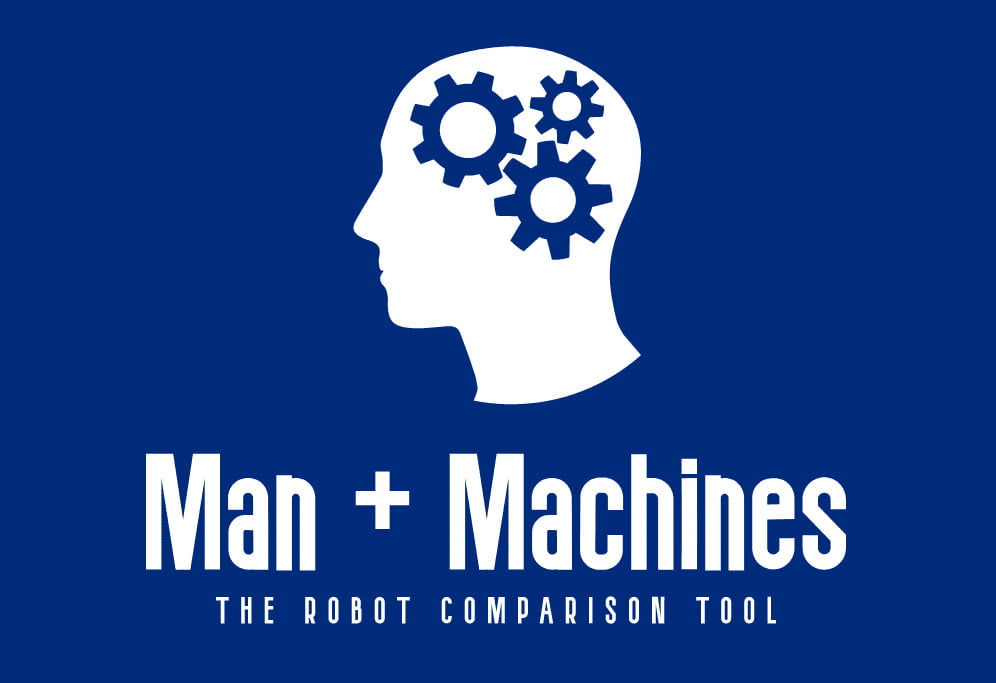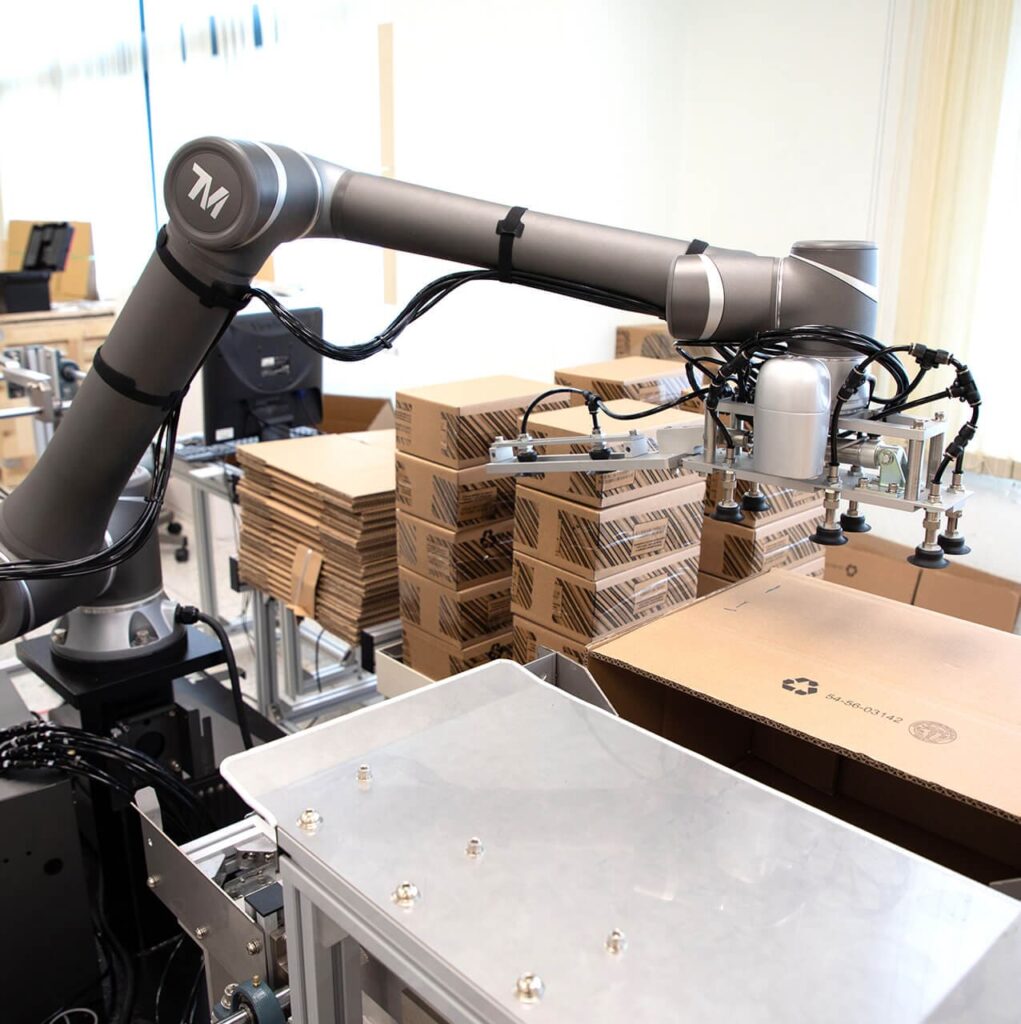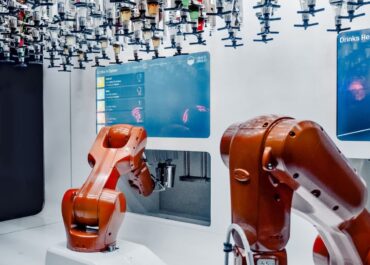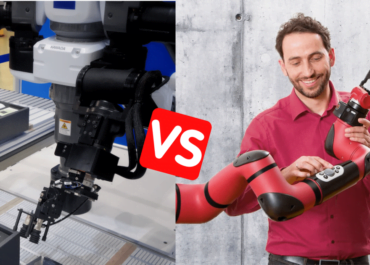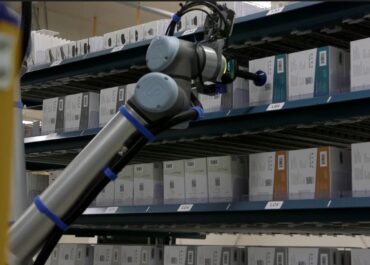Do you plan to buy a collaborative robot? The cost is obviously a key factor in your decision.
But with numerous cobot models and effectors available on the market, it’s not easy to know which price you’re going to pay.
Here are all the costs to purchase, set up, and deploy your cobot. We’ll help you find your way around!
Which costs for a collaborative robot?

When talking about collaborative robots, there are several elements that make them work, apart from the robotic arm.
So even though cobot models and kits usually provide the essentials, it’s always good to know what’s in the package to understand the costs.
Here’s what you need for your cobot:
- A robotic arm
- A power supply unit
- A programming interface
- A mounting stand
- Connection cables suitable for inputs/outputs
- External effectors and sensors
- Delivery, support and maintenance services
Apart from effectors, all of these elements are usually included in the cobot models you buy from the manufacturer or an official distributor. But be sure to check what you’ll really get from the package.
Price of cobots : a general comparison

In general, when you plan to buy a cobot, the best way is to contact the original brand (whether Universal Robot, ABB, Fanuc, Kuka…) or their official suppliers. They will provide you with cobot models whose pricing generally varies from 10,000 to 50,000 USD, depending on the range and the series.
These differences can be explained by a number of factors:
- Quality of the fabric and materials
- Technical specs
- Technological innovations and sensor accuracy
- Effectors and accessories included
- Design & Aesthetics
But they are also explained by brand pricing strategies to target specific market shares. To figure out the best value for money for your project, you need to closely review these pricing differences.
We’ve created a price map that describes the price strategies of the most popular cobot brands. This will help you make the best choice.
But before looking at this ranking, here are some precision:
- It’s hard to access accurate pricing data. Manufacturers only disclose prices to prospective customers.
- This data may vary from day to day – this is only an estimate based on company statements and internet offers.
- The ranking is based on average entry-level prices, for mid-range models.
- Ask the manufacturer for the real price, or check our cobot listing.
Low-cost and affordable cobots (8000-20000 USD)
In recent years, many cobotics companies have entered the market. These young companies are looking to disrupt the market with lighter and cost-optimized technologies. They want to seduce low-budget SMEs but also service, education, and professional industries. Here’s the average pricing of these companies:
MyCobot
<10000
Automata
5000-10000
Franka Emika
10000
Dobot
10000-20000
Jaka
10000-20000
Versatile medium-cost cobots (USD 20,000-35,000)
In the medium price range, these cobotics companies fully address the main audience of the market, i.e. SMEs not familiar with automation. They are either historical players with a strong positioning (Universal Robot) or innovative players with a lot of technological advantages (Aubo and Productive Robotics). Their main selling point is to equal their price to an average worker’s wage. Here’s their average offer:
Productive Robotics
20000-25000
Aubo
20000-25000
Rethink Robotics
25000-30000
Mitsubishi Electric
30000-35000
Universal Robot
30000-40000
Specialized high-cost cobots (35000-50000 USD)
By offering higher pricing, these cobotics manufacturers rely on their reputation in the industry and the quality of their manufacturing. They promote high-end robots to big industries. And as a result, their models have superior design and performance. Here’s the average price you can expect from them :
Omron-TechMan
35000-45000
Doosan
35000-45000
ABB
35000-50000
Motoman-Yaskawa
40000-50000
FANUC
40000-50000
Kuka LBR
40000-50000
How much do cobotic end effectors cost?

After you’ve chosen a robotic model, you need external effectors to set up your cobots for specific applications. These tools might be included in your cobot kit. But usually, you need to buy separate tools to handle more specialized tasks.
Here’s how much you can expect to pay for these end effectors:
- Mechanical gripper or robotic hand: 3000 to 10000 USD depending on whether it is pneumatic or electric and the number of fingers.
- Vacuum gripper: 1000 to 10000 USD depending on the number of suction cups and the payload (from a simple package to a pallet).
- Orbital sanding tool: 500 to 2000 depending on the material.
- Smart vision kit: 1000 to 5000 depending on the technology.
- Torque sensor: 3000 to 6000 depending on the sensitivity.
- Screwing kit: 5000 to 8000 USD depending on the brand.
- Gluing and material distribution tool: 4000 to 6000 depending on the manufacturer.
- Welding device: 8000 to 30000 USD depending on the dimensions of the welding arc.
There you go, with all this information in your hand, we’ll let you do the math.
We hope we’ve helped you find the right deal for your brand-new robotic system! You can also check a complete cobot review and pricing comparison here.
